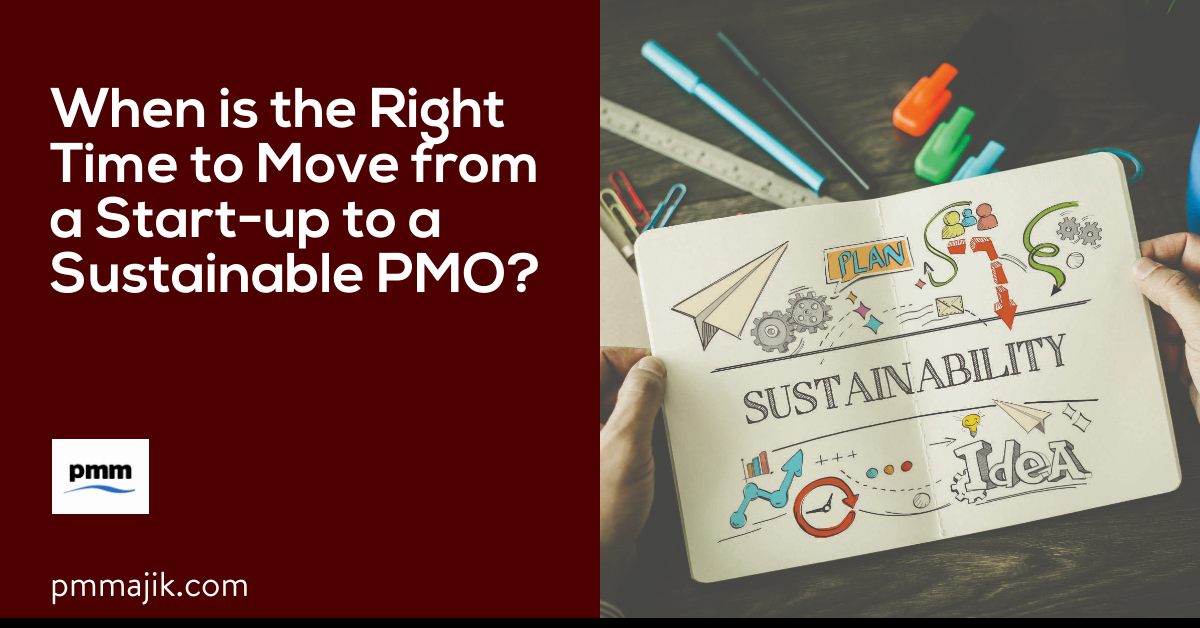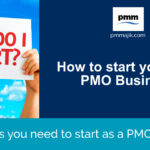There will come the point in the lifecycle of your project management office (PMO) that you will no longer be getting set up. This will be the moment when you’re PMO is fully established, so when is the right time to move from a start-up to a sustainable PMO?
You need to understand when your PMO has reached maturity. What this means for each PMO and each business will be slightly different, but there are frameworks that you can work with.
To help you understand when your PMO is mature and ready to become a permanent fixture within the business, we’re going to look at:
- Different project management maturity models
- How these models could be adapted for a PMO maturity assessment
- Other ways to assess PMO capabilities
- Our complete PMO maturity assessment framework
How can I assess the maturity of my PMO?
Many theories have been developed to help businesses know whether their project management capabilities are mature. Unfortunately, the same care and attention hasn’t been given to PMOs specifically.
There are four prominent frameworks commonly used to test how mature a company’s project management capabilities are. You can work through each of these and pick and choose definitions and ideas that relate to your PMO and business model.
Each are similar, with optimisation of processes as the end goal, for example. Here is a brief rundown of the key concepts in each model.
| Maturity framework | Stages |
| PRINCE2 Maturity Model | Awareness of processesRepeatable processesDefined processesManaged processesOptimised process |
| Organisational Project Management Maturity Model (OPM3) | StandardiseMeasureControl Improve |
| PPM Maturity Model | Initiation of projectsDeveloped projectsDefined projectsManaged projectsOptimised projects |
| Kerzner Project Management Maturity Model | Common languagesCommon processesSingular methodologyBenchmarkingContinuous improvement |
How can I use these models to assess PMO maturity?
You can see that there is a general consensus about what a mature project process looks like. You can take the time to build a framework that will help you score the maturity of your PMO.
It can be a worthy task to give yourself a robust way of understanding if you’re ready to move from start-up to sustaining. However, it can be a long task and may ultimately only be needed once or twice.
What are the other options to assess my PMO’s capabilities?
While there are few PMO-focussed maturity assessment models, there are some. We have developed our own way for you to assess your PMO maturity and whether you should shift to BAU.
Using the assessment, you can determine:
- Where your PMO maturity level sits at the moment
- Where that level fits on a wider spectrum
- What level of maturity do you want your PMO to achieve
- The actions needed to get your PMO where you want it to be
With all of this, you will be able to determine a clear pathway to becoming a sustainable PMO, even if you’re not quite at that point yet.
What is the PMO Maturity Assessment Framework?
In the framework we designed, you get a complete package of resources to help figure out where on your PMO journey you are.
Included in the bundle of tools are:
- User guides for easy access
- Reporting that works with other resources
- Templates to complete your assessment
You are able to feed in your information, and a number is generated, giving you your PMO maturity level. It measures things like governance, planning, and cost management, among many other factors, so you can see a well-rounded picture of the development of your office.
PRO and Master members of this site get full access to the framework.
When should I move from a start-up to a sustainable PMO?
The right time to move from a start-up to a sustainable PMO is when your office has reached sufficient maturity. You can assess this in a number of ways and take advantage of our dedicated PMO Maturity Assessment Framework to simplify your process.






